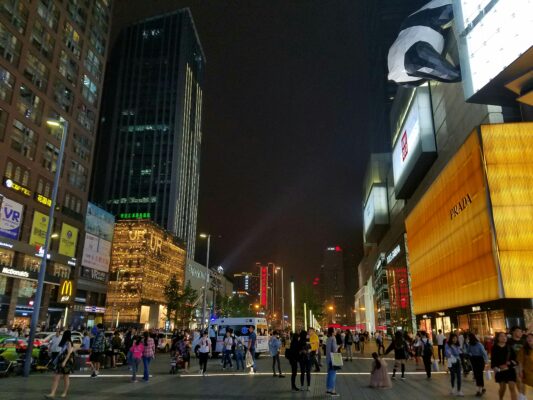In the face of a global market slowdown, luxury brands are rethinking their marketing strategies to maintain growth and relevance. Historically resilient to economic downturns, the luxury sector now finds itself navigating a unique set of challenges. Shifts in consumer behavior, changing demographics, and the rising importance of digital experiences are driving brands to adapt. Here’s how luxury brands are innovating their marketing strategies to thrive in a more competitive and uncertain market.
The Impact of the Market Slowdown on Luxury Brands
The luxury market has experienced sustained growth over the last decade, fueled by rising wealth in emerging markets, particularly in Asia. However, global economic uncertainties—including inflation, geopolitical tensions, and shifts in consumer spending priorities—are beginning to take their toll.
Key Challenges:
- Reduced Discretionary Spending: Middle-tier luxury consumers are cutting back on non-essential purchases, forcing brands to appeal to ultra-high-net-worth individuals.
- Evolving Consumer Expectations: Today’s luxury buyers seek more than just products; they demand meaningful experiences and ethical commitments.
- Rising Competition: New luxury entrants and digital-native brands are vying for the same affluent customers, intensifying competition.
Adapting Marketing Strategies for a New Era
Luxury brands are responding to these challenges with innovative strategies that emphasize value, exclusivity, and sustainability.
1. Targeting the Ultra-High-Net-Worth Segment
As mid-tier consumers tighten their budgets, brands are focusing on the ultra-high-net-worth (UHNW) demographic, a group less affected by economic fluctuations. Marketing efforts are tailored to highlight exclusivity and heritage, resonating with consumers who value uniqueness and legacy.
Example:
Hermès, renowned for its timeless craftsmanship, has amplified its messaging around bespoke services and rare pieces, ensuring that its UHNW clientele feels valued and prioritized.
2. Embracing Digital Transformation
Luxury brands have historically been cautious about entering the digital space, fearing it might dilute their exclusivity. However, the pandemic accelerated the need for a robust online presence. Now, brands are investing in immersive digital experiences that replicate the exclusivity of in-store shopping.
Strategies:
- Virtual Showrooms: High-end brands like Dior and Gucci offer virtual showrooms where customers can explore collections in a curated, interactive environment.
- Augmented Reality (AR): AR tools allow consumers to visualize products, such as trying on jewelry or assessing furniture in their homes.
- E-commerce Excellence: Personalized online shopping experiences, including concierge services and exclusive drops, cater to digital-first luxury buyers.
3. Leveraging Experiential Marketing
In a saturated market, luxury brands are creating memorable experiences that strengthen emotional connections with their audience. Experiential marketing goes beyond products, offering consumers a sense of belonging and prestige.
Notable Examples:
- Exclusive Events: Louis Vuitton’s high-profile runway shows and Chanel’s private client dinners create buzz and exclusivity.
- Travel Collaborations: Luxury hotels and airlines are partnering with brands like Burberry and Montblanc to offer co-branded experiences.
4. Doubling Down on Sustainability
Today’s affluent consumers increasingly prioritize sustainability and ethical practices in their purchasing decisions. Luxury brands are embracing sustainable initiatives to align with these values and differentiate themselves from competitors.
Key Initiatives:
- Ethical Sourcing: Brands like Cartier and Tiffany & Co. emphasize the use of responsibly sourced materials.
- Circular Fashion: Gucci’s “Gucci Off The Grid” collection focuses on recycled and eco-friendly materials.
- Carbon Neutrality: LVMH has pledged to achieve carbon neutrality across its operations by 2050.
By integrating sustainability into their narratives, luxury brands attract younger, eco-conscious consumers while reinforcing their long-term commitment to societal well-being.
5. Storytelling and Heritage Marketing
Luxury is as much about stories as it is about products. Heritage and storytelling play a significant role in reinforcing a brand’s authenticity and emotional appeal.
Approaches:
- Highlighting craftsmanship and legacy through behind-the-scenes content.
- Collaborating with artists and influencers who embody the brand’s values.
- Telling “local stories” that resonate with consumers in specific regions, ensuring cultural relevance.
Example:
Rolls-Royce recently launched its “Inspiring Greatness” series, featuring visionaries from various fields who reflect the brand’s ethos of excellence and innovation.
6. Focus on High-Growth Markets
While traditional luxury markets like Europe and North America remain important, brands are doubling down on high-growth regions, particularly Asia and the Middle East. Wealth creation in these areas offers significant opportunities for expansion.
Strategies:
- Tailored campaigns that reflect regional tastes and preferences.
- Pop-up stores and exclusive collaborations with local artists and designers.
- Partnerships with e-commerce platforms like Tmall and JD.com to reach affluent consumers in China.
The Role of Technology in Luxury Marketing
Advanced technologies like artificial intelligence (AI) and blockchain are playing a pivotal role in transforming luxury marketing:
- AI-Driven Personalization: AI tools analyze consumer behavior to deliver hyper-personalized experiences, from tailored product recommendations to exclusive offers.
- Blockchain for Transparency: Blockchain technology ensures authenticity and provenance, addressing concerns about counterfeits in the luxury market.
- NFTs and the Metaverse: Brands like Balenciaga and Dolce & Gabbana are exploring the metaverse and NFTs to engage younger, tech-savvy audiences.
Looking Ahead
As the market slowdown persists, luxury brands face both challenges and opportunities. Success in this new era will depend on their ability to innovate while staying true to their core values of quality, exclusivity, and heritage. By embracing digital transformation, sustainability, and experiential marketing, luxury brands can not only weather the storm but emerge stronger and more connected to their audience.
In the words of Bernard Arnault, CEO of LVMH:
“In uncertain times, it is not enough to maintain the status quo. Luxury is about creating dreams, and it is our job to keep that dream alive, no matter the economic climate.”
By adapting to changing consumer preferences and leveraging technology, luxury brands can continue to inspire and captivate their customers, ensuring their place at the pinnacle of the global market.



